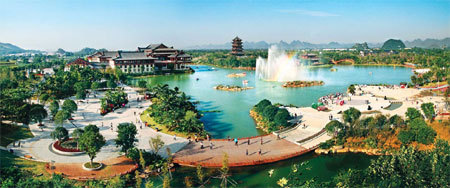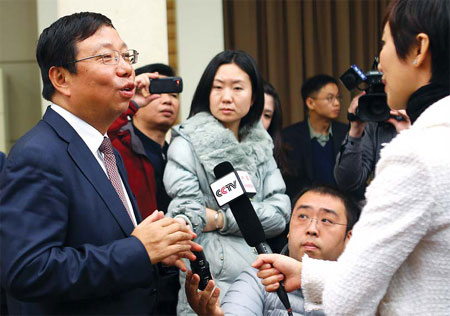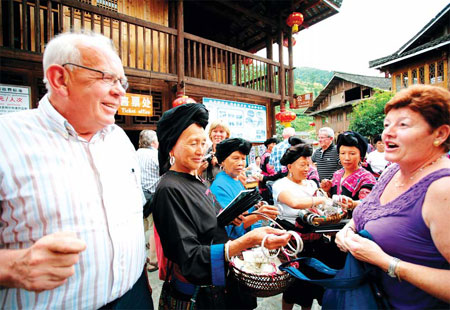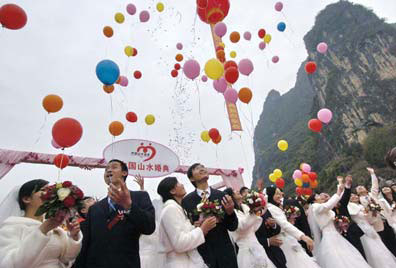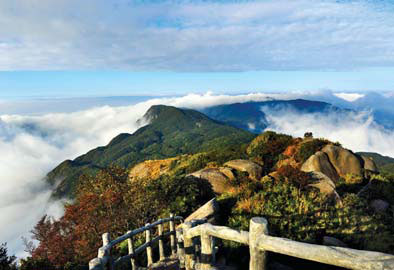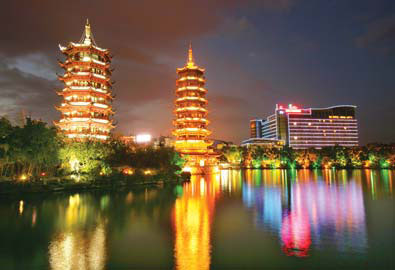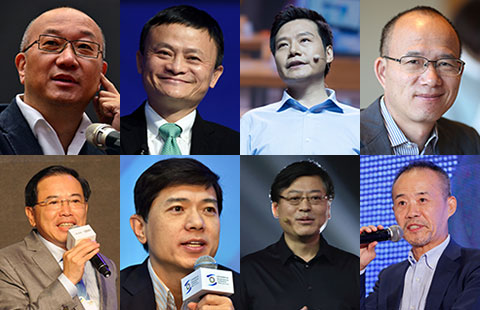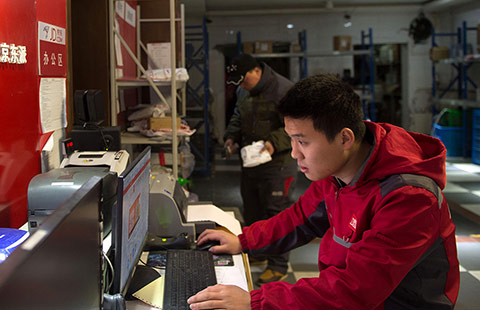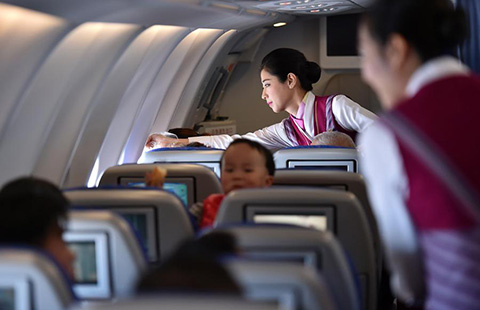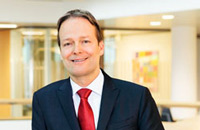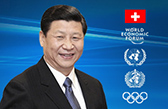Scenic Guilin has grand plans for growth
By Zhang Zhao (China Daily) Updated: 2013-03-27 07:17
|
The venue for the second Guangxi Horticulture Expo in Guilin. Local authorities are trying to integrate tourism with other sectors for more balanced growth. [Photo/China Daily] |
|
Zhao Leqin, Guilin's top official, talks with reporters on Tuesday after a news conference on the city's development plans. [Photo/China Daily] |
|
Vendors sell trinkets to participants in an international tourism forum in Guilin.[Photo/China Daily] |
|
Cycling race in Guilin. Provided to China Daily[Photo/China Daily] |
|
Mass wedding with Guilin's scenic landscape as a backdrop.[Photo/China Daily] |
|
Mao'er Mountain, a nature preserve in Guilin's Xing'an county. [Photo/China Daily] |
|
The city's twin towers are named after the sun and the moon. [Photo/China Daily] |
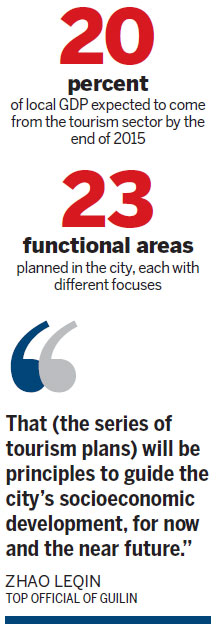
"East or west, Guilin scenery is best." Virtually all Chinese people know the old saying that has been passed down for the last 800 years.
The splendid natural beauty makes the city of Guilin in Guangxi Zhuang autonomous region among the most popular tourist destinations in the entire country.
The fame of its landscape is reflected in the picture on the back of China's 20-yuan banknote. It is the sight of spectacular karst mountains and a fisherman on a bamboo raft floating down the Lijiang River.
The river is now a UNESCO World Heritage site candidate.
As one of the first Chinese cities to open up to the outside world, Guilin was made an indicator of the nation's tourism industry by the UN World Tourism Organization. It also serves as permanent host city of a tourism research forum organized by the Pacific Asia Travel Association.
Despite its fame, the city lags behind the national average in per capita GDP and average net income. It is also still on its way to expanding the tourism market while finding a balanced model to develop the industry.
Last November, the National Development and Reform Commission approved a series of tourism plans that "will be principles to guide the city's socioeconomic development, for now and the near future", said Zhao Leqin, the top official in the city.
The blueprint calls for Guilin to become a world-class sightseeing destination, a national model for eco-civilization, a pilot development zone for tourism innovation and a regional hub for cultural exchanges.
Balanced growth
In addition to tourism, the guidelines also cover modern agriculture and services, low-carbon industries, transportation and logistics systems, environmental protection and social management.
They also grant preferential policies to Guilin for land management, taxation, financing and investment.
Zhao now envisions an industrial system that integrates tourism with other sectors as increasing attention is placed on improving livelihoods, market administration and eco-friendliness.
The city government will first focus on improving services and infrastructure such as airports, railways and highways in the coming three years, he said.
By the end of 2015, tourism is expected to generate 20 percent of local GDP, while the service industry is projected to contribute 40 percent.
Over a longer term, the city's goal is to become a world sightseeing and resort attraction and a platform for international tourism cooperation and cultural exchanges. Tourism will contribute more than 25 percent of the local GDP by 2020.
By that time, the plan calls for the city to have an economy centered around tourism that is augmented by balanced modern agriculture, high-tech industries and advanced manufacturing. It will also develop a number of influential brands in tourism, culture and exhibitions.
'Big gift'
The national strategy to develop the city into an international tourism attraction is "a big gift given at a good time", said Mayor Huang Junhua. "It will be a new engine to drive Guilin's economy."
The city government has mapped out 23 functional areas, each with different focuses, and introduced many projects in tourism, infrastructure and services.
In the Lingui New District, a pilot zone for innovative policies established in 2007, the administration planned 276 major projects last year with a combined value of nearly 20 billion yuan ($3.2 billion).
This year, the city government will invest 56.6 billion yuan in 584 projects. It will also host a number of international activities such as the seventh UNWTO/PATA Forum on Tourism Trends and Outlook, the fourth China Guilin International Tourism Expo and the fourth Guilin International Scenery Culture & Tourism Festival.
Smaller-scale tourism promotion campaigns and festivals will be held in some districts and even suburban areas.
City plans call for improvements in the local transportation network including high-speed railways and highways that link the city with neighboring regions. It is also laying the groundwork for a bonded logistics park adjacent to the airport.
zhangzhao@chinadaily.com.cn
- China's leading online travel agency eyes bridging the world
- China's passenger vehicles sales fall in January
- Firms urged to sign up to Initiative
- Baidu shaking up its medical business with emphasis on AI
- Top 10 Chinese mainland companies granted most patents in 2016
- Ant Financial tipped to be raising expansion funds
- Chinese business tycoons attend entrepreneur forum in Yabuli
- China's grain heartland deepens cooperation with Silk Road countries
